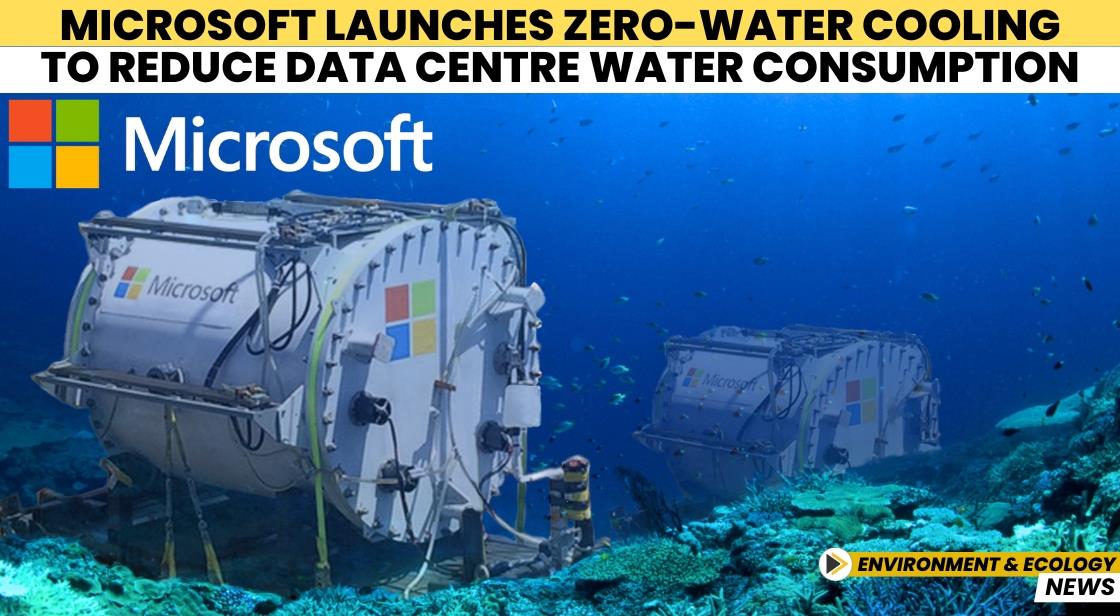Microsoft Launches Zero-Water Cooling to Reduce Data Centre Water Consumption

News Synopsis
Microsoft is making strides in sustainable technology with the introduction of a new zero-water cooling system aimed at significantly reducing water usage across its data centres. This revolutionary cooling solution will save over 125 million litres of water per data centre annually, marking a milestone in the company's commitment to environmental conservation.
New Zero-Water Cooling System for Data Centres
Unveiled in August 2024, the zero-water cooling technology is based on a “closed-loop” mechanism that recycles water within the system, eliminating the need for fresh water supplies. Instead of using new water, the system circulates a liquid that is introduced during the construction phase, continuously reusing it throughout the cooling process.
This approach ensures that the water is used efficiently, dramatically cutting down on overall consumption.
In a recent blog post, Microsoft shared the significance of this new design:
“By adopting chip-level cooling solutions, we can deliver precise temperature control without water evaporation. While water is still used for administrative purposes like restrooms and kitchens, this design will avoid the need for more than 125 million litres of water per year per data centre.”
How Does the Zero-Water Cooling System Work?
The zero-water cooling system works by circulating a specially designed liquid between servers and chillers. This process dissipates heat effectively without requiring additional water, relying on a closed-loop system to reduce the need for external water supplies. This approach not only conserves water but also improves the overall efficiency of the cooling process, ensuring optimal performance of data centres while adhering to sustainable practices.
The liquid circulates continuously within the system, maintaining a stable temperature and ensuring that the servers run smoothly. By adopting this innovative system, Microsoft aims to reduce its environmental impact significantly while enhancing the operational efficiency of its data centres.
Microsoft’s Commitment to Water Conservation
Microsoft’s dedication to water conservation extends beyond this new cooling system. The company has been making consistent efforts to improve the sustainability of its data centres.
In the last fiscal year, Microsoft reported a notable achievement in its Water Usage Effectiveness (WUE) metric, which measures the amount of water required to cool its data centres relative to energy usage.
“In our last fiscal year, our data centres operated with an average Water Usage Effectiveness (WUE) of 0.30 L/kWh. This represents a 39 per cent improvement compared to 2021, when we reported a global average of 0.49 L/kWh. This WUE reduction is due to our ongoing efforts to actively reduce water wastage, expand our operating temperature range, and audit our data centre operations.”
Microsoft’s ongoing investments in refining the design and operations of its data centres reflect the company’s commitment to reducing water usage and advancing its sustainability initiatives.
Pilot Projects and Future Plans
While the zero-water cooling system is a significant leap forward, Microsoft will continue to use a combination of air-cooled and water-cooled systems in its existing data centres. However, the company has ambitious plans for the future. By 2026, Microsoft will begin piloting the zero-water cooling system in new data centre projects located in Phoenix, Arizona, and Mount Pleasant, Wisconsin.
These sites will serve as testing grounds for the innovative technology before it is fully implemented in future data centres.
Starting in August 2024, the new zero-water cooling technology will be integrated into all new data centre designs, with the aim of having these environmentally conscious facilities operational by late 2027.
Setting a Benchmark for the Industry
Microsoft’s pioneering efforts in introducing zero-water cooling to its data centres not only contribute to its own sustainability goals but also set a new benchmark for the tech industry. The company’s commitment to environmental responsibility demonstrates that large-scale technological advancements can go hand-in-hand with efforts to preserve natural resources and reduce environmental footprints.
As demand for data centre infrastructure grows, Microsoft’s innovative approach serves as a crucial reminder that sustainability should be a key focus of technological progress. With the introduction of this cutting-edge cooling technology, Microsoft is leading the charge in responsible environmental stewardship within the data centre industry.
You May Like









